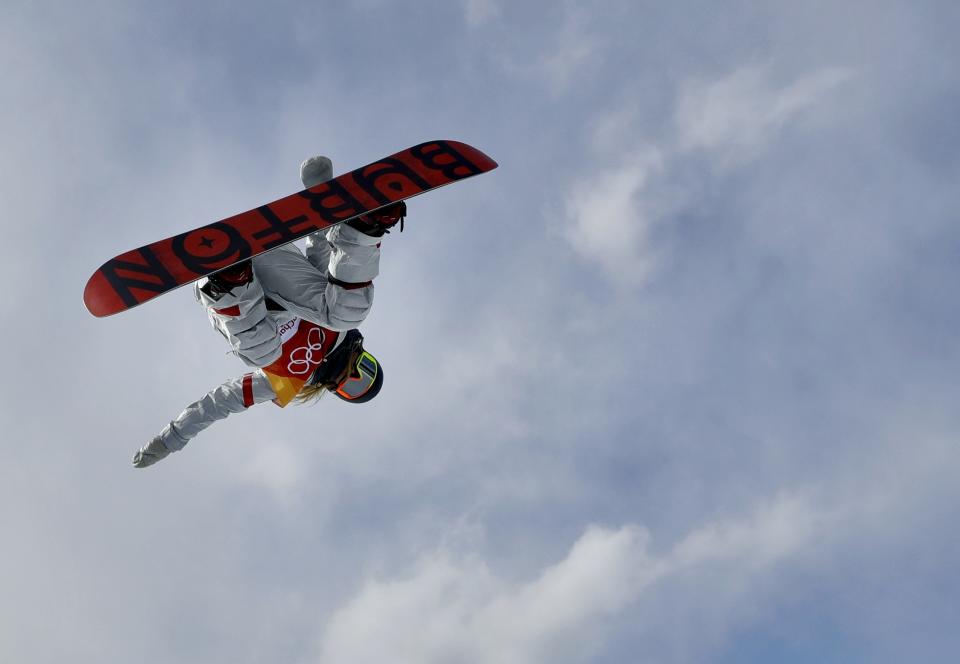X Games events keeping United States alive in these Olympics
It was an auspicious start to these Games for the United States. On the fourth day in which medals were awarded, the Americans had all the Olympic storylines it could have wanted: a teenage Cinderella stunning the slopestyle field with a gold medal run on his third and final run; a lovable, beer-shotgunning family; a moment more golden than the medal itself when that same teenager, Red Gerard, asked an official if he could hug his mom before being whisked away for interviews and fame, from one life to the next.
And that was just one event, and one of the 244 Americans in these Olympic Games. The very next day, Jamie Anderson defended her gold medal in the slopestyle, making the U.S. 4-of-4 in slopestyle gold medals in its nascent Olympic lifespan. Anderson and Gerard were just preludes, warm-up acts for the main events that followed.
Then came Chloe Kim, America’s churro-eating, ice cream-craving, hangry darling, another teenage snowboarding sensation, flipping and spinning and grabbing her way to a gold medal in near-perfect fashion.
Three snowboard events. Three gold medals. Which made the men’s halfpipe the redemption of Shaun White, who is, objectively, the greatest snowboarder of all time. A spectacular run by Japan’s Ayumu Hirano only made the moment bigger, the comeback story greater. White needed to be flawless, and he was, throwing down a 97.75 on a scale that grades to 100.
In a span of three days, America had a reckless yet charming teenager who overslept the morning of his gold medal run. It had a veteran defending her title. The potential next face of snowboarding, and the erstwhile face going out in style.
Since then? It’s been a quiet, quiet week for the Americans.

Mikaela Shiffrin defibrillated a dormant heartbeat with an upset win in the giant slalom, a win that was quickly, if not unfairly, shrouded in disappointment after she took fourth by less than a blink of an eye in her marquee event, the slalom, the next day. John-Henry Krueger was a pleasant story on the short track, claiming a silver.
But it says something about the state of American winter athletics that one of the most well-known names of these Games is a figure skater named Adam Rippon, who skated flawlessly as an individual yet is so far behind, talent-wise, that he took 10th. It was such a surprise that the U.S. managed to win bronze in the team event, in which Rippon also skated, that it was hailed as a success.
A 10th? A bronze?
Since when did America celebrate 10ths and bronzes?
The dearth of golds, and medals in general, has reached a point that many writers and fans have taken to pointing out the fact that the United States is piling up top-10 finishes, which is fine and good, because a top-10 finish at the Olympic Games means that you are in the top-10 in the entire world in your event. It’s something to be unequivocally proud of. But these are the Olympic Games, and success is not measured by top-10s, but medals, no different than quarterbacks being measured by Super Bowl wins and golfers by majors.
And with the South Koreans dominating the majority of the short track events, the Dutch asserting themselves on the long track, the NHL crippling the U.S. in hockey, and Norway mopping the floor with every country in basically every other event, there only seems to be one discipline in which the United States is consistently medaling: X Games events (or, as one commenter hilariously though accurately dubbed them, “weed events”).
Snowboarding made its Olympic debut in Nagano in 1998, and in its brief time on the Olympic schedule, the Americans have won double the medals of any other country, producing exponentially more star power. Only five countries have won multiple golds; the U.S. has already collected 10 and counting. What began as two events — giant slalom and halfpipe — is now up to six, with the additions of snowboard cross, slopestyle, parallel slalom and, for the first time in 2018, big air.
On Monday, the big air qualification was held. It shouldn’t come as a surprise that the Americans are sending more athletes to the finals — Anderson, Julia Marino, Jessika Jenson — than any other country, though Japan matched them with three. Gerard will return to the slopes for the men’s event, along with Chris Korning and Kyle Mack. Only Switzerland has as many athletes competing.
So while the Americans fall further and further behind in the overall medal count — 16 back from Norway at the time of this writing — they do lead in one category: snowboarding. Their four gold medals are more than any other country’s total of any color of medal.
“Freakin’ awesome,” Anderson said after qualifying for the big air finals on Monday, per Team USA’s Cat Hendrick. She was speaking of big air, though for America, she could have been speaking for snowboarding as a whole.
More from Yahoo Sports:
• Figure skating’s final frontier: Is the quintuple jump possible?
• Even in the Olympics, why on Earth would a curler use PEDs?
• What’s the fastest Winter Olympic sport? There are three possible answers
• Mystery solved: What’s written on Lindsey Vonn’s racing suit?
• Sally Field is trying to set up her son with ‘Olympic prince’ Adam Rippon


